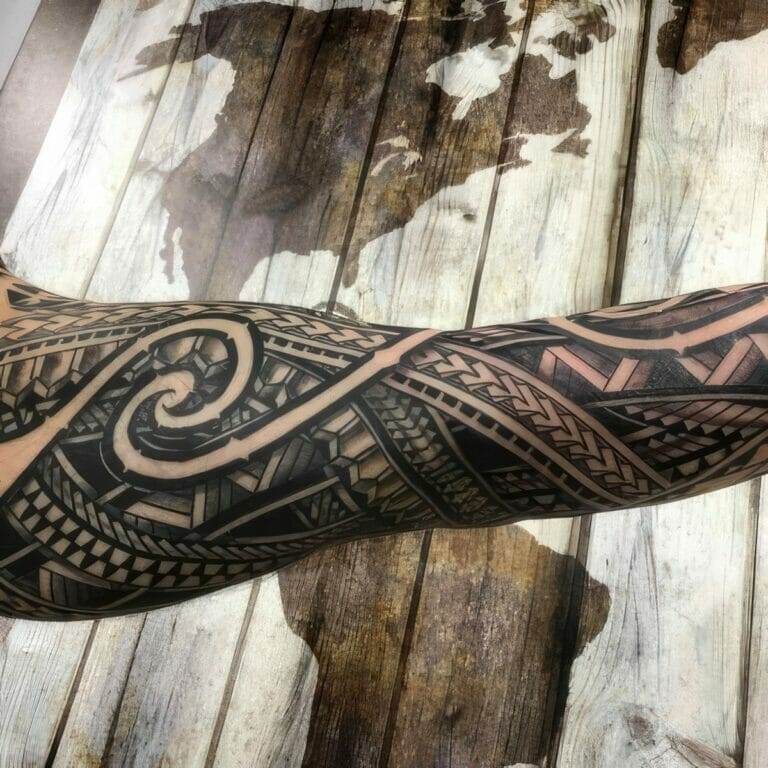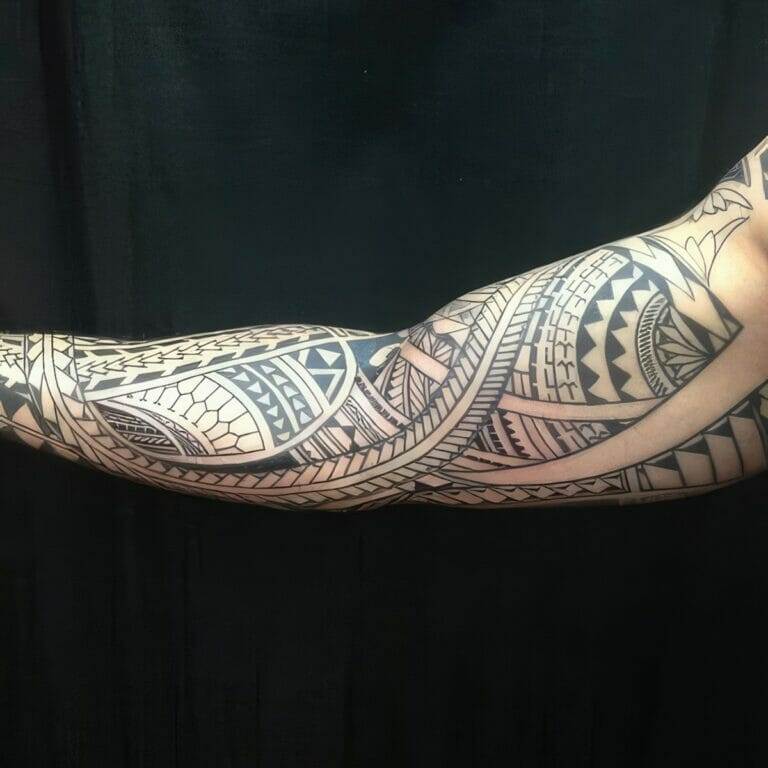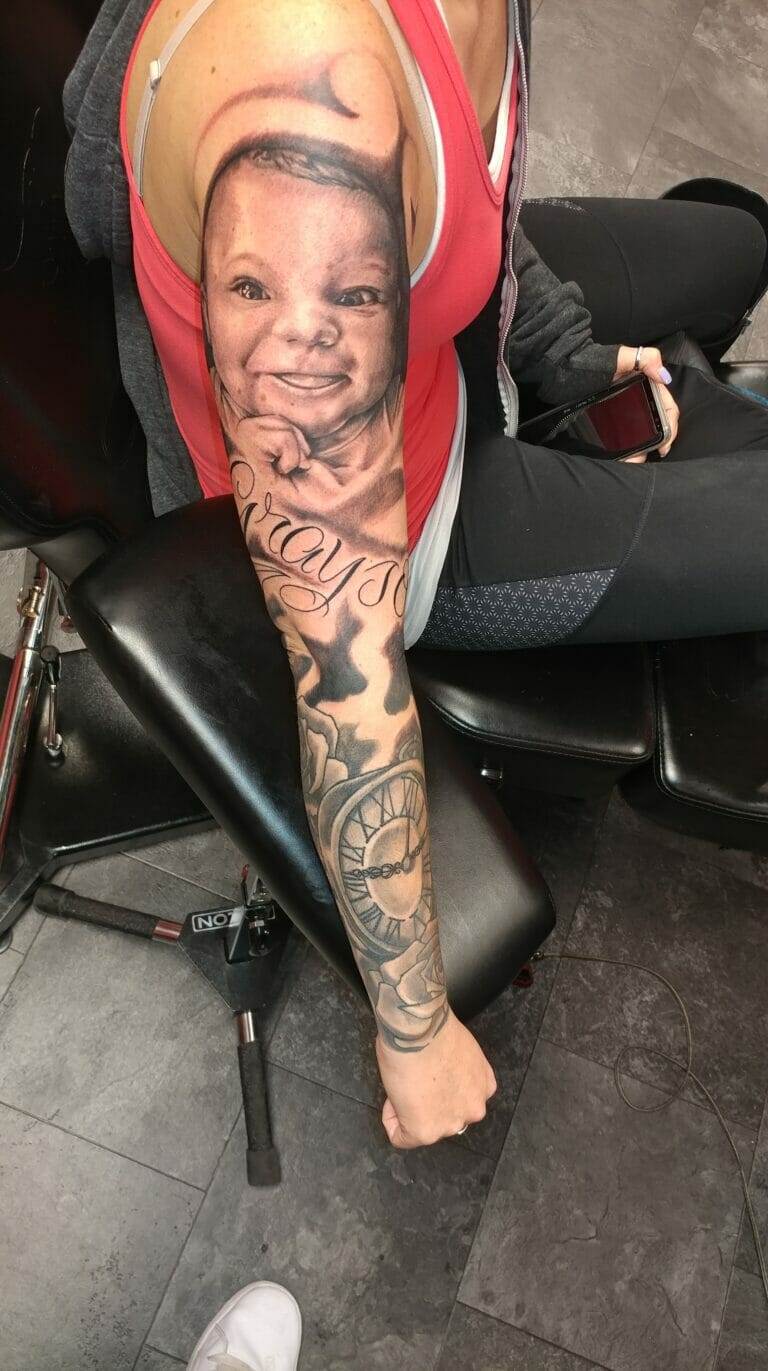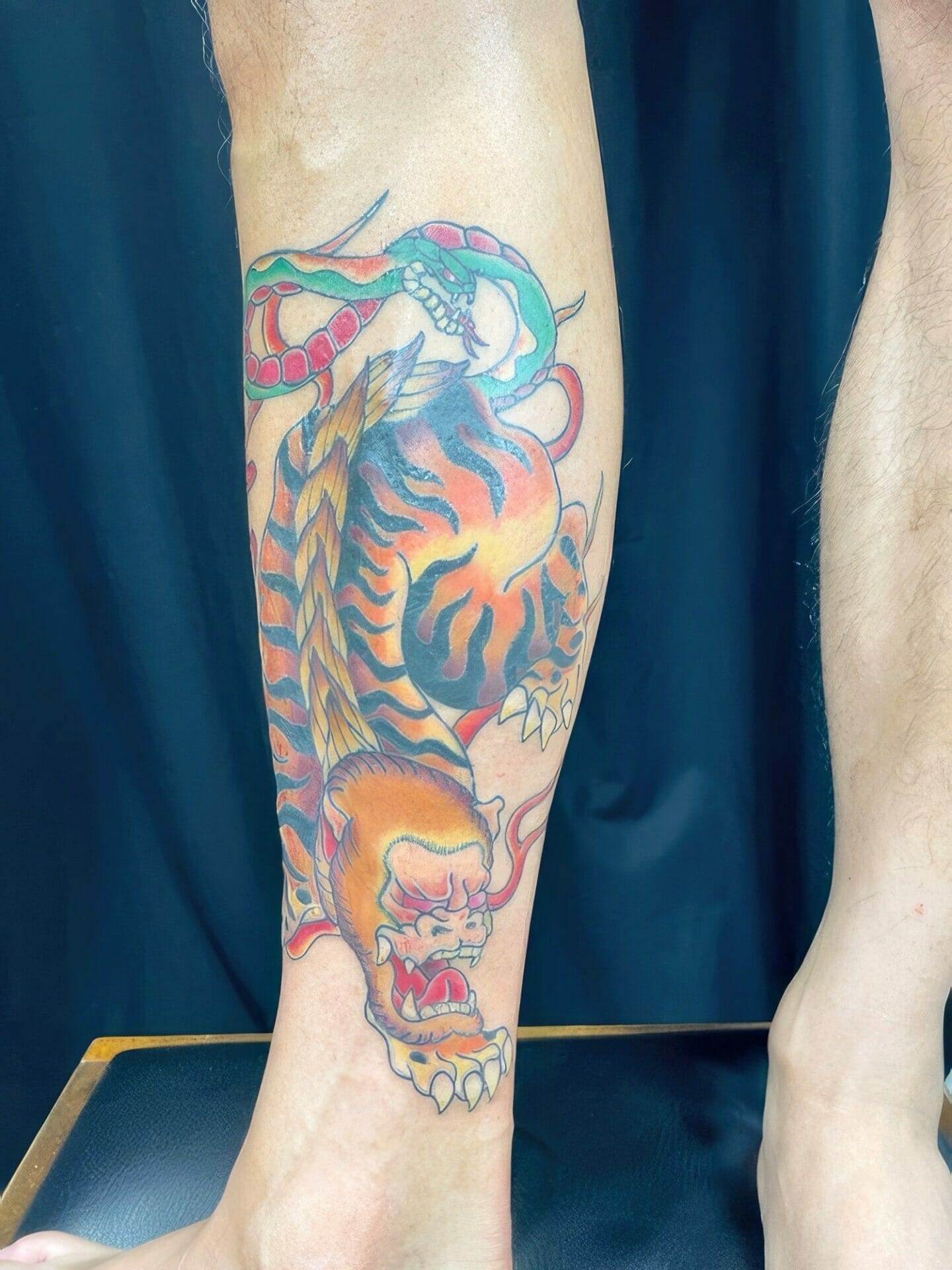
Japanese tattooing has a rich and vibrant history that dates back thousands of years. The art of tattooing, known as irezumi, has been an integral part of Japanese culture and society. It has evolved over time, reflecting changes in Japanese culture and society. Tattoo imagery holds great significance in Japanese culture, representing various aspects of life, spirituality, and personal beliefs.
Tattooing in Japan has a long history, dating back to the Jomon period (10,000 BCE – 300 BCE). During this time, tattoos were used for spiritual and decorative purposes. They were believed to have protective powers and were often used to ward off evil spirits. As time went on, tattooing became associated with criminal activities and was banned by the government in the Edo period (1603-1868). However, it continued to thrive underground.
In the late 19th century, tattooing began to regain popularity as a form of art and self-expression. Today, Japanese tattooing is highly regarded for its intricate designs and symbolism. It is considered one of the most respected forms of tattoo art in the world.
The Symbolism Behind Dragons in Japanese Tattoos
Dragons hold great significance in Japanese mythology and are often depicted in Japanese tattoo art. In Japanese culture, dragons are seen as powerful and benevolent creatures that bring good luck and fortune. They are believed to have control over the elements and are associated with water, rain, and storms.
In Japanese tattoo art, dragons are often depicted as large, serpentine creatures with scales and sharp claws. They are usually shown with a fierce expression and are often surrounded by clouds or waves. Dragons are seen as protectors and guardians, symbolizing strength, wisdom, and courage.
The Power and Strength Represented by Tigers in Japanese Tattoos
Tigers have long been revered in Japanese culture for their strength and power. They are seen as symbols of courage, bravery, and protection. In Japanese folklore, tigers are believed to have the ability to ward off evil spirits and bring good fortune.
In Japanese tattoo art, tigers are often depicted as fierce and majestic creatures. They are shown with sharp claws, bared teeth, and a powerful stance. Tigers are often surrounded by bamboo or cherry blossoms, symbolizing strength and resilience.
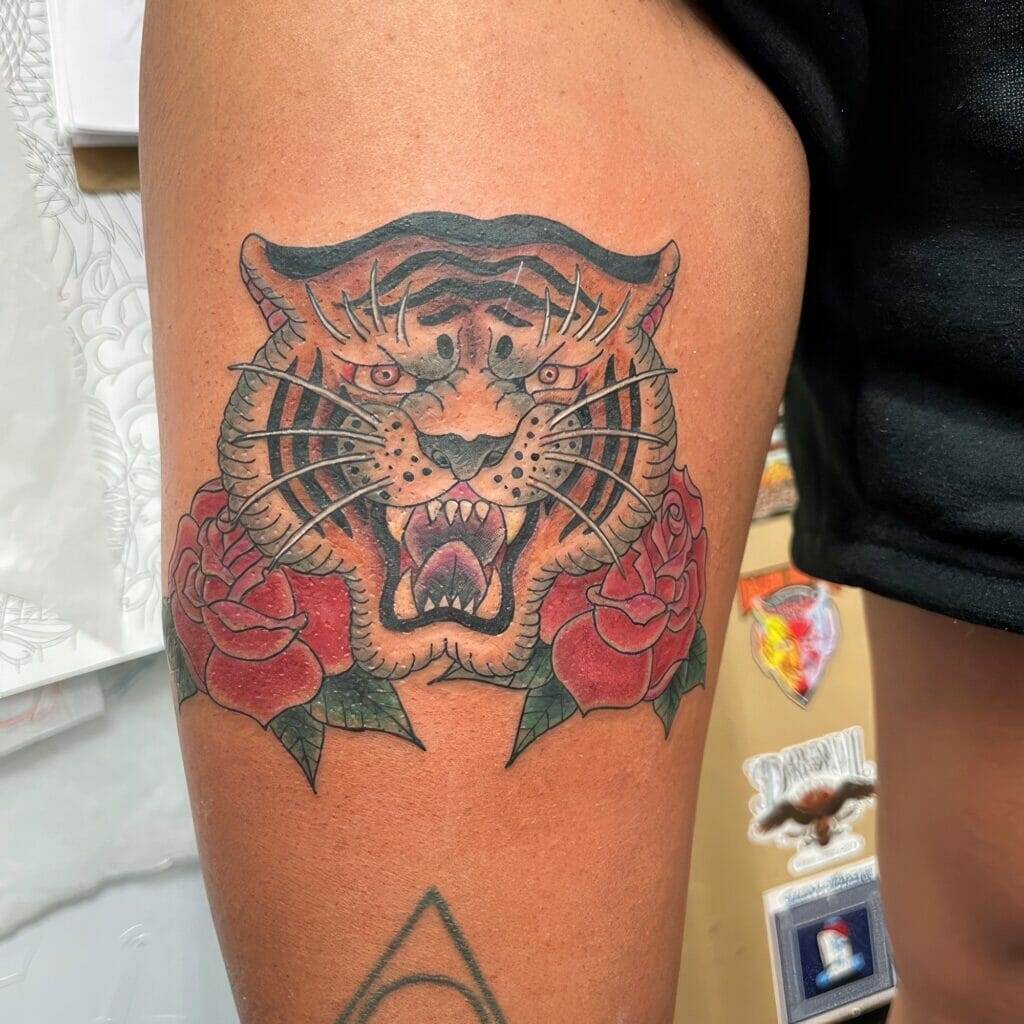
The Role of Foo Dogs in Japanese Tattoo Imagery
Foo dogs, also known as lion dogs or guardian lions, have a significant role in Japanese culture and are often depicted in Japanese tattoo art. Foo dogs are believed to have protective powers and are often placed at the entrance of temples and shrines to ward off evil spirits.
In Japanese tattoo art, foo dogs are depicted as powerful and majestic creatures with a lion-like appearance. They are often shown with a fierce expression and are adorned with intricate patterns and designs. Foo dogs symbolize strength, courage, and protection.
The Mythical Creatures of Japanese Tattoo Art
In addition to dragons, tigers, and foo dogs, there are several other mythical creatures commonly found in Japanese tattoo art. These include phoenixes, koi fish, and kirin.
Phoenixes are mythical birds that symbolize rebirth and immortality. They are often depicted with vibrant colors and intricate patterns. Phoenix tattoos represent resilience, transformation, and the ability to overcome challenges.
Koi fish are a popular motif in Japanese tattoo art and symbolize perseverance and determination. They are often depicted swimming upstream against strong currents, representing the ability to overcome obstacles in life.
Kirin is a mythical creature that combines the features of a dragon and a deer. It is believed to bring good luck and is often associated with wisdom and prosperity. Kirin tattoos represent good fortune and success.
The Cultural and Historical Significance of Japanese Tattoo Imagery
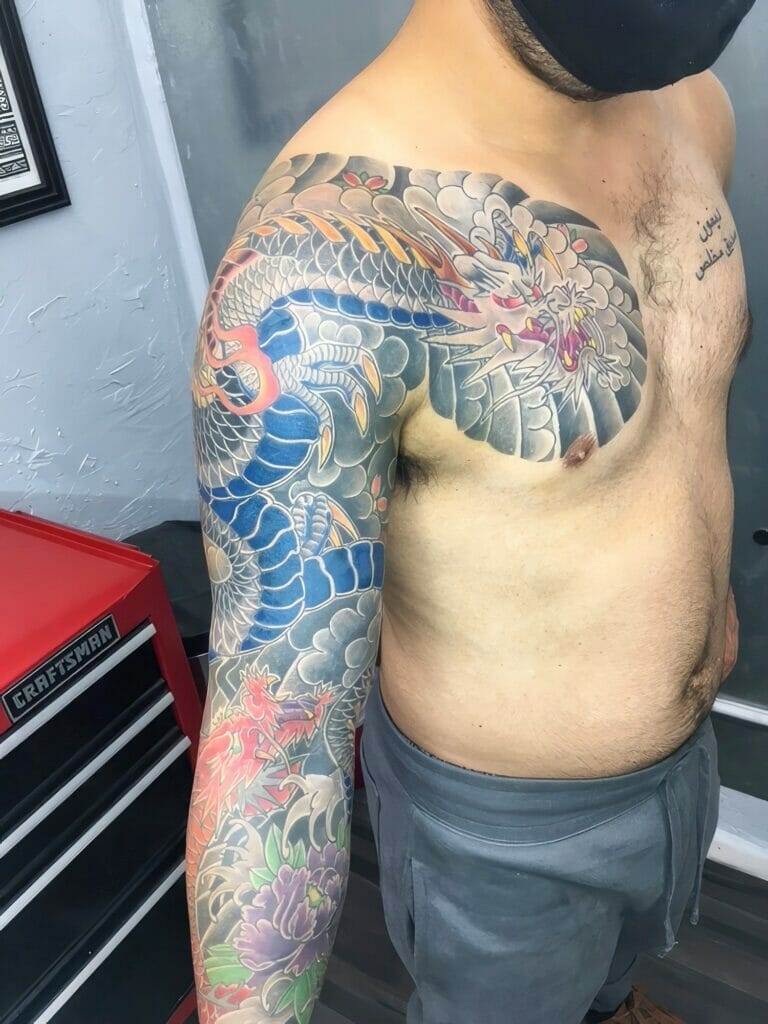
Japanese tattoo imagery has evolved over time, reflecting changes in Japanese culture and society. In the past, tattoos were associated with criminal activities and were seen as a mark of shame. However, in modern times, tattoos have become more accepted and are seen as a form of self-expression and art.
Japanese tattoo imagery often reflects traditional Japanese values and beliefs. It is deeply rooted in spirituality and often incorporates elements of nature, mythology, and folklore. Tattoos are seen as a way to connect with one’s ancestors and honor their heritage.
The Different Styles and Techniques of Japanese Tattooing
Traditional Japanese tattooing, known as tebori, is done by hand using a wooden or metal rod with a bundle of needles attached to the end. The artist dips the needles into ink and then taps them into the skin using a mallet. This technique allows for greater control and precision, resulting in intricate and detailed designs.
In modern times, electric tattoo machines have become more common in Japanese tattooing. These machines allow for faster and more efficient tattooing, but some artists still prefer the traditional tebori technique for its authenticity and connection to the past.
The Evolution of Japanese Tattoo Imagery in Modern Times
Japanese tattoo imagery has gained popularity in Western culture in recent years. Many people are drawn to the intricate designs and symbolism of Japanese tattoos. However, there has been some controversy surrounding the appropriation of Japanese tattoo imagery by non-Japanese individuals.
In response to this, some Japanese tattoo artists have adapted their designs to suit Western tastes while still maintaining the integrity of traditional Japanese tattooing. This has led to the emergence of new styles and techniques that blend traditional Japanese elements with Western influences.
The Importance of Choosing the Right Japanese Tattoo Artist
Choosing the right Japanese tattoo artist is crucial to ensuring that you get a high-quality tattoo that reflects your personal style and beliefs. It is important to find an artist who is experienced and skilled in Japanese tattooing techniques.
When looking for a Japanese tattoo artist, it is important to do your research and look at their portfolio. Look for an artist who specializes in Japanese tattooing and has a style that resonates with you. It is also important to consider the artist’s reputation and client reviews.
The Personal Meanings and Interpretations of Japanese Tattoo Imagery
Japanese tattoo imagery can have personal meanings for individuals. Each design carries its own symbolism and can be interpreted in different ways. Some people choose tattoos that represent their personal beliefs or values, while others choose designs that have personal significance to them.
People often adapt and interpret Japanese tattoo imagery to suit their own needs. They may incorporate elements from different designs or add their own personal touches. This allows individuals to create unique tattoos that reflect their own identity and story.
Japanese tattoo imagery holds great significance in Japanese culture and society. It reflects traditional values, beliefs, and mythology. The intricate designs and symbolism of Japanese tattoos have made them highly regarded in the world of tattoo art.
Japanese tattoo imagery has evolved over time, reflecting changes in Japanese culture and society. It has gained popularity in Western culture, but there has been some controversy surrounding its appropriation. Nonetheless, Japanese tattoo artists continue to adapt their designs to suit Western tastes while maintaining the integrity of traditional Japanese tattooing.
Choosing the right Japanese tattoo artist is crucial to ensuring that you get a high-quality tattoo that reflects your personal style and beliefs. It is important to do your research and find an artist who specializes in Japanese tattooing techniques.
Japanese tattoo imagery can have personal meanings for individuals, allowing them to create unique tattoos that reflect their own identity and story. Whether it’s dragons, tigers, or foo dogs, each design carries its own symbolism and can be interpreted in different ways. Japanese tattoo imagery continues to be popular and enduring in modern times, reflecting its timeless appeal and cultural significance.
If you’re fascinated by the intricate meanings behind Japanese tattoo imagery, you’ll definitely want to check out this related article from Redemption Ink: “Dragons, Tigers, and Foo Dogs: Understanding the Meanings of Japanese Tattoo Imagery.” This informative piece delves into the symbolism and cultural significance of these iconic designs. From the fierce power of dragons to the protective nature of foo dogs, you’ll gain a deeper understanding of the stories these tattoos tell. So, if you’re considering getting a Japanese-inspired tattoo or simply want to appreciate the artistry behind them, this article is a must-read.

